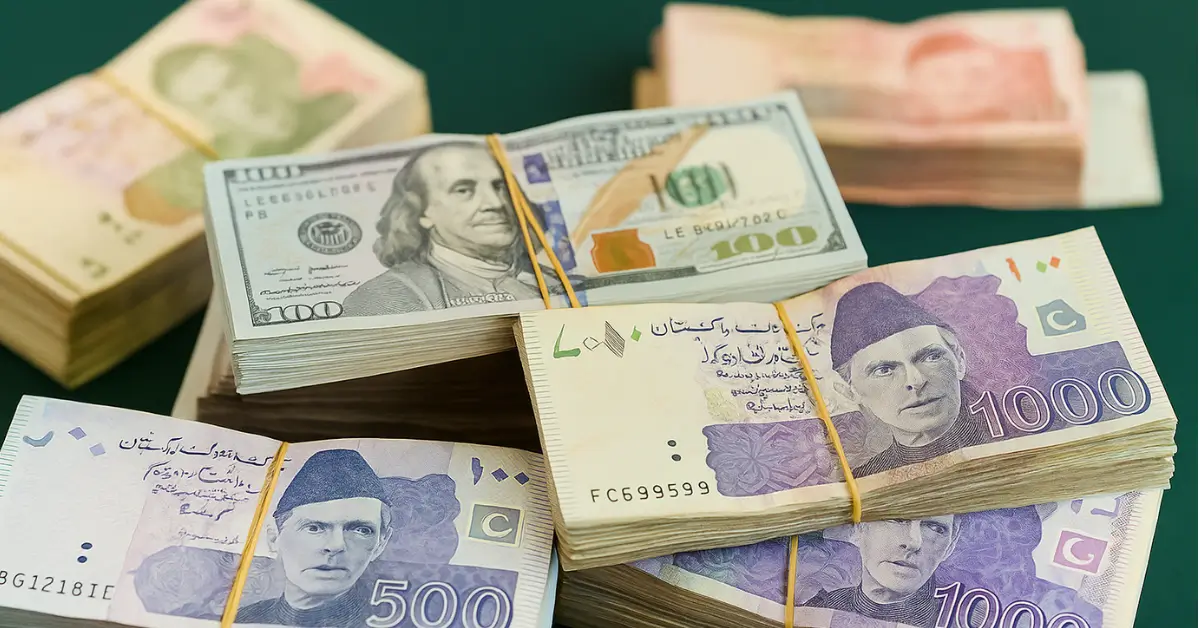Rupee exchange rate today
The US dollar in the interbank market recorded a slight drop in value, closing at Rs 281.42, down by 3 paise on Wednesday. According to the State Bank of Pakistan (SBP), this minor dip is temporary and mainly driven by a reduction in import demand and lower pressure from external payments, reflecting the Rupee exchange rate today.
Why Did the Dollar Decline?
The recent decline in the US dollar is not a major shift but a reflection of temporary market movements. One of the key reasons behind this drop is the reduced demand for imports, which lessens the need for dollars in the market. Additionally, there’s been a partial decrease in external payment pressures, which also contributes to the dollar’s dip.
The State Bank of Pakistan has clarified that these changes are market-based and not due to any artificial interventions or support to the rupee.
Dollar Movement in the Interbank Market
According to data from the interbank market:
- The lowest rate of the US dollar during the day was Rs 281.38
- The highest rate reached Rs 281.48
This narrow range indicates that while the dollar experienced fluctuations, the changes remained within a controlled and stable limit. Forex dealers noted that the US dollar has shown relative stability against the Pakistani rupee in recent days.
BISP Taleemi Wazaif Payment be Received after the Summer Holidays? Schedule here
Factors Supporting Rupee Stability
Several key factors are currently playing a role in keeping the rupee stable:
- IMF Program: Ongoing support from the International Monetary Fund has helped stabilize Pakistan’s economic outlook.
- Increased Remittances: A rise in remittances from overseas Pakistanis has improved the availability of foreign exchange.
- Export Receipts: Improved export performance has brought in more dollars, helping balance the market.
These elements have helped reduce pressure on the local currency and are contributing to a more stable exchange rate.
What Do Currency Experts Say?
Experts believe that the future value of the Pakistani rupee depends heavily on two key elements:
- Foreign Exchange Reserves
- External Payment Obligations
If foreign reserves continue to strengthen and external payments are managed effectively, the rupee is likely to remain stable. However, any sudden rise in import bills or debt repayments could once again put pressure on the local currency.
BISP 8171 Empowers Women in 2025 with Dynamic Survey for Self-Employment Aid
Government and SBP’s Market-Driven Policy
Unlike past practices, the State Bank of Pakistan and the government are now allowing the currency exchange rate to move freely according to market forces. They are not artificially supporting the rupee, which helps maintain transparency and keeps the exchange rate in line with actual economic conditions.
This market-based approach is aimed at creating long-term stability and encouraging confidence among investors and traders.

